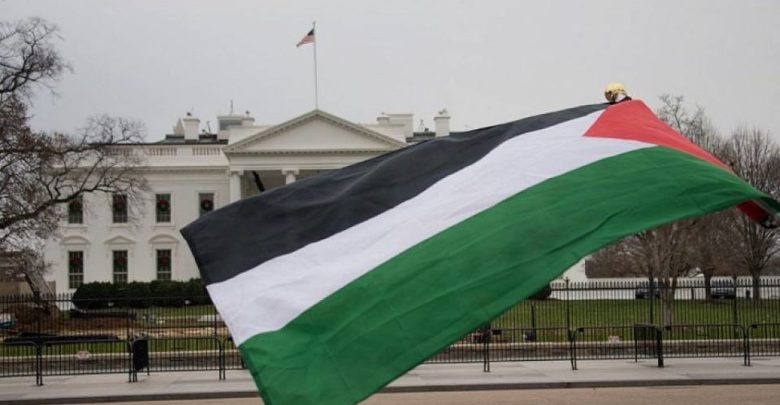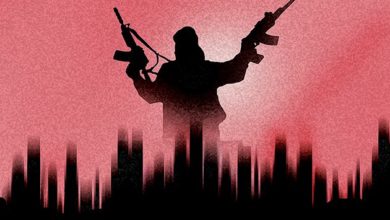Trump Announces Israel–Hamas Agreement on Gaza Peace Plan

Prepared by the researche : Amr Rashad Mohamed — Expert in International Relations and Middle East Affairs
DAC Democratic Arabic Center GmbH
On October 9, 2025, U.S. President Donald Trump announced that Israel and the Islamic Resistance Movement (Hamas) had agreed to his proposed peace plan to end the war in the Gaza Strip. Hamas responded by outlining the points it accepted in the plan without mentioning those it opposed, including its readiness to release Israeli captives within 72 hours of implementing the agreement, in exchange for the release of Palestinian prisoners and a gradual Israeli withdrawal from the Gaza Strip—something that was not clearly specified in Trump’s plan.
Israel’s cabinet approved the agreement a day after the mediators formally announced it. While Trump interpreted Hamas’s positive response as a sign of full acceptance, Israel was surprised by that reading, viewing it instead as an approval of only the first phase. Prime Minister Benjamin Netanyahu continued to stress the importance of implementing later phases, especially the one calling for Hamas’s disarmament.
Although there was optimism about implementing the first stage of the plan, ambiguity shrouded the subsequent phases, particularly concerning mechanisms of enforcement and guarantees for a permanent cessation of hostilities.
Motives Behind the Ceasefire
Israel’s war on Gaza deepened its international isolation and triggered profound shifts in global public opinion, including within the United States. Polls revealed—for the first time—a greater sympathy for Palestinians than for Israel among Americans, a trend visible across both the Republican and Democratic camps, especially among younger generations.
At the same time, protests erupted across major cities and digital platforms worldwide, demanding an end to what many described as genocide, calling for humanitarian access to Gaza and lifting the blockade. These popular pressures translated into a policy shift among several traditionally pro-Israel Western countries—such as the United Kingdom, Canada, and Australia—which recognized the State of Palestine during the Two-State Solution Conference held alongside the 80th UN General Assembly in New York in September 2025, despite opposition from Washington and Tel Aviv.
The war also strained the U.S.–Israel relationship, making it increasingly difficult for Washington to maintain unconditional support for Israel amid mounting accusations of war crimes and crimes against humanity. Trump—long considered one of Israel’s most supportive presidents—appeared to lose patience with Netanyahu’s open-ended pursuit of war, particularly as Israel prepared to invade Gaza City, home to around one million Palestinians, raising fears of mass atrocities.
Another factor shaping Trump’s shift was his eagerness to win the Nobel Peace Prize, reinforcing his image as a “global peacemaker.”
U.S. embarrassment peaked following Israel’s failed airstrike on Qatar on September 9, 2025, which sparked outrage across the Arab and Islamic worlds. Combined with Israel’s growing international isolation, the surge in global recognition of Palestine, and shifting public sentiment, these developments pushed Trump to declare that the time had come to end the Gaza war.
During the UN General Assembly, he convened a meeting with leaders from Qatar, Turkey, Saudi Arabia, Jordan, Pakistan, and Egypt to shape his ceasefire initiative, subsequently summoning Netanyahu to Washington to present it.
The Announcement of Trump’s Plan
Trump unveiled his 21-point peace plan at a joint press conference with Netanyahu at the White House. The plan, essentially drafted from an Israeli perspective, incorporated nearly all of Israel’s stated war objectives, effectively rescuing Netanyahu from international isolation by reframing his conditions for ending the war as an international initiative.
The plan’s announcement—and the endorsement it received from several Arab and Muslim states (despite their proposals being ignored)—placed Hamas in a difficult position. To avoid appearing obstructive, Hamas issued a statement expressing willingness to engage with the plan as a means to create momentum that would make a return to war politically difficult, especially after releasing Israeli captives—who had become a liability. The movement’s calculated gamble was that Trump’s celebration of their release would generate global pressure against resuming hostilities, relying on Western public opinion (its main source of leverage) and Arab states’ political will (its main weakness).
The first phase of the plan was agreed upon after indirect talks in Sharm el-Sheikh, held one day after the second anniversary of the “Al-Aqsa Flood” operation on October 7, 2023, which had triggered the war. Senior officials from the U.S., Qatar, Turkey, and Egypt participated—underscoring the political significance of the talks. Trump sent his son-in-law Jared Kushner and his Middle East envoy Steve Witkoff to the negotiations, reflecting his personal investment in reaching an agreement.
The following day, Trump announced that Israel and Hamas had signed the first phase of the framework plan, which entailed a ceasefire, the exchange of all Israeli captives (alive and dead), and a withdrawal of Israeli forces to the so-called “Yellow Line” inside Gaza, marking the boundary of their initial pullback.
Main Features of the Agreement
Hamas political leader in Gaza, Khalil al-Hayya, confirmed the deal, stating that it included a phased Israeli withdrawal and a prisoner exchange, and that the movement had received U.S. and regional guarantees ensuring an end to military operations and the implementation of the plan.
Israel’s government formally ratified Trump’s proposal on October 10, in a cabinet session attended in part by Kushner and Witkoff, who sought to pressure extremist ministers to vote in favor. Kushner argued the deal would “isolate Hamas, encourage Arab normalization, and preserve Israel’s security.”
Still, hardline ministers Bezalel Smotrich and Itamar Ben-Gvir voted against the plan. Following its approval, the Israeli military announced a ceasefire starting at noon Friday, marking the beginning of the first phase’s implementation. Netanyahu, however, declared that Israeli forces would remain in Gaza to ensure Hamas’s disarmament, warning: “If it happens easily, good. If not—it will happen the hard way,” signaling readiness to resume war if necessary.
Under this phase, Israel is to withdraw to the Yellow Line within 24 hours, while humanitarian aid begins flowing into Gaza. The exchange of prisoners and remains is to occur within three days. Israel will retain control over about 53% of Gaza’s territory during this stage.
Reports indicate the exchange involves 20 living Israeli captives, 26 confirmed dead, and two unaccounted for. Hamas stated that recovering the bodies might take longer than freeing the living. In return, Israel will release 250 long-term Palestinian prisoners and 1,700 detainees arrested during the war.
Once the deal takes effect, aid convoys carrying food and medicine will enter Gaza to support hundreds of thousands displaced by the mass destruction of their homes. Trump emphasized that “no one will be forced to leave Gaza.”
Although Trump expressed confidence in the durability of the truce, he acknowledged that “details remain unresolved” in later stages. To boost momentum, he announced plans to visit the region, address the Israeli Knesset, and attend a summit in Egypt to formalize the accord.
Egypt later announced a major international summit on October 13, with over 20 world leaders, including Trump, to discuss ending hostilities and stabilizing the Middle East. This summit likely corresponds to the next phase of Trump’s plan, which envisions establishing a “World Peace Council” to oversee Gaza’s postwar administration—chaired by Trump himself.
Hamas and other Palestinian factions swiftly rejected what they called “foreign guardianship,” insisting that Gaza’s governance is an internal Palestinian matter.
As part of the implementation, the U.S. deployed about 200 troops to join a joint monitoring task force. U.S. Central Command head Brad Cooper visited Gaza to discuss mechanisms for a “Postwar Stabilization Coordination Center,” assuring that no American troops would be stationed inside Gaza. Arab and Muslim nations Washington sought to include—such as Indonesia and Azerbaijan—conditioned participation on a clear legal mandate from either the UN Security Council or the Arab League.
Will the Agreement Hold?
While mediators managed to resolve most disputes between Hamas and Israel regarding the first phase, it remains unclear whether real progress was made on core issues. The current deal represents only an initial step within a broader, still-undefined plan. Without agreement on later phases, lasting stability is unlikely.
The first stage is the least complex; unresolved questions persist about the future of Hamas’s military capabilities, Gaza’s reconstruction and governance, and Israel’s complete withdrawal.
Thus far, Trump’s plan—aside from its initial phase—amounts to a broad outline without a detailed strategy for implementation or conflict resolution. Netanyahu retains wide latitude to exploit loopholes and ambiguities, particularly in the absence of binding enforcement mechanisms. This was evident in disputes over the Palestinian prisoner list.
Simultaneous implementation of the first-phase measures may reduce opportunities for obstruction, but concerns remain that Netanyahu could renege once Israeli captives are returned. Ultimately, the success of a permanent ceasefire depends on international political will—from the U.S., Europe, and Arab states—to restrain Netanyahu’s inclination to resume military operations.
Conclusion
The announcement of the Gaza ceasefire agreement marks the most significant step yet toward ending a two-year campaign of mass destruction that killed or wounded nearly a quarter of a million Palestinians—about 13% of Gaza’s population, the highest civilian toll in modern warfare.
The first phase of the agreement rests on strong international momentum and heavy U.S. pressure, making it difficult for Netanyahu to withdraw, despite the plan’s clear bias toward Israeli terms.
The framework consists of two main stages: an initial ceasefire and partial withdrawal, followed by prisoner exchanges—forming the cornerstone of a tentative peace. Yet the plan is fraught with complexity, grounded in three divergent reference points: Hamas and other Palestinian factions’ vision of sovereignty and resistance; Israel’s entirely different conception of postwar control; and the U.S. approach, which—despite yielding to many Israeli demands—seeks to preserve enough flexibility to achieve a lasting truce.
Whether the international momentum generated at the Sharm el-Sheikh Summit will evolve into real pressure to end the war permanently, or merely into leverage against Hamas that legitimizes Israel’s continued aggression, remains uncertain.




